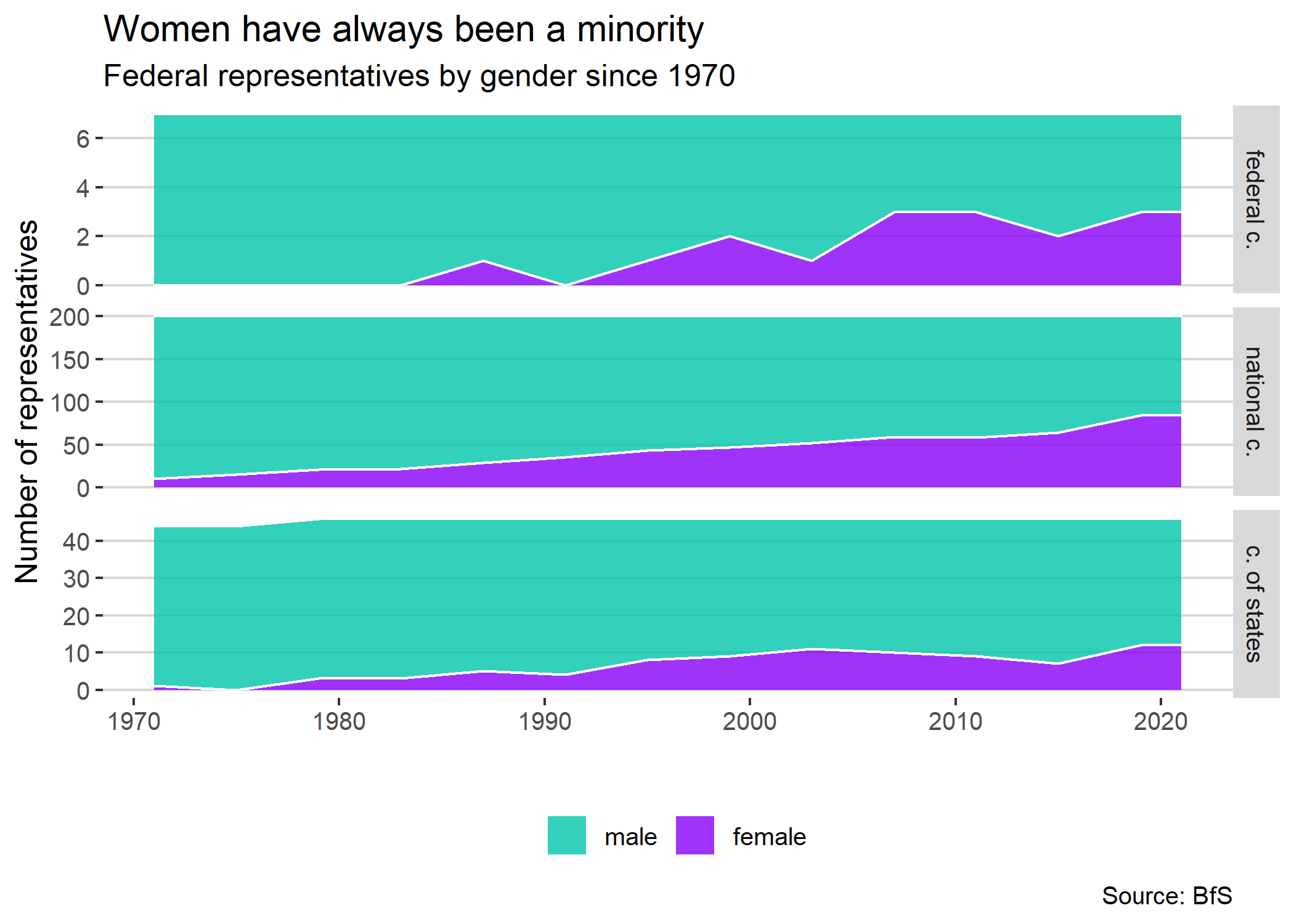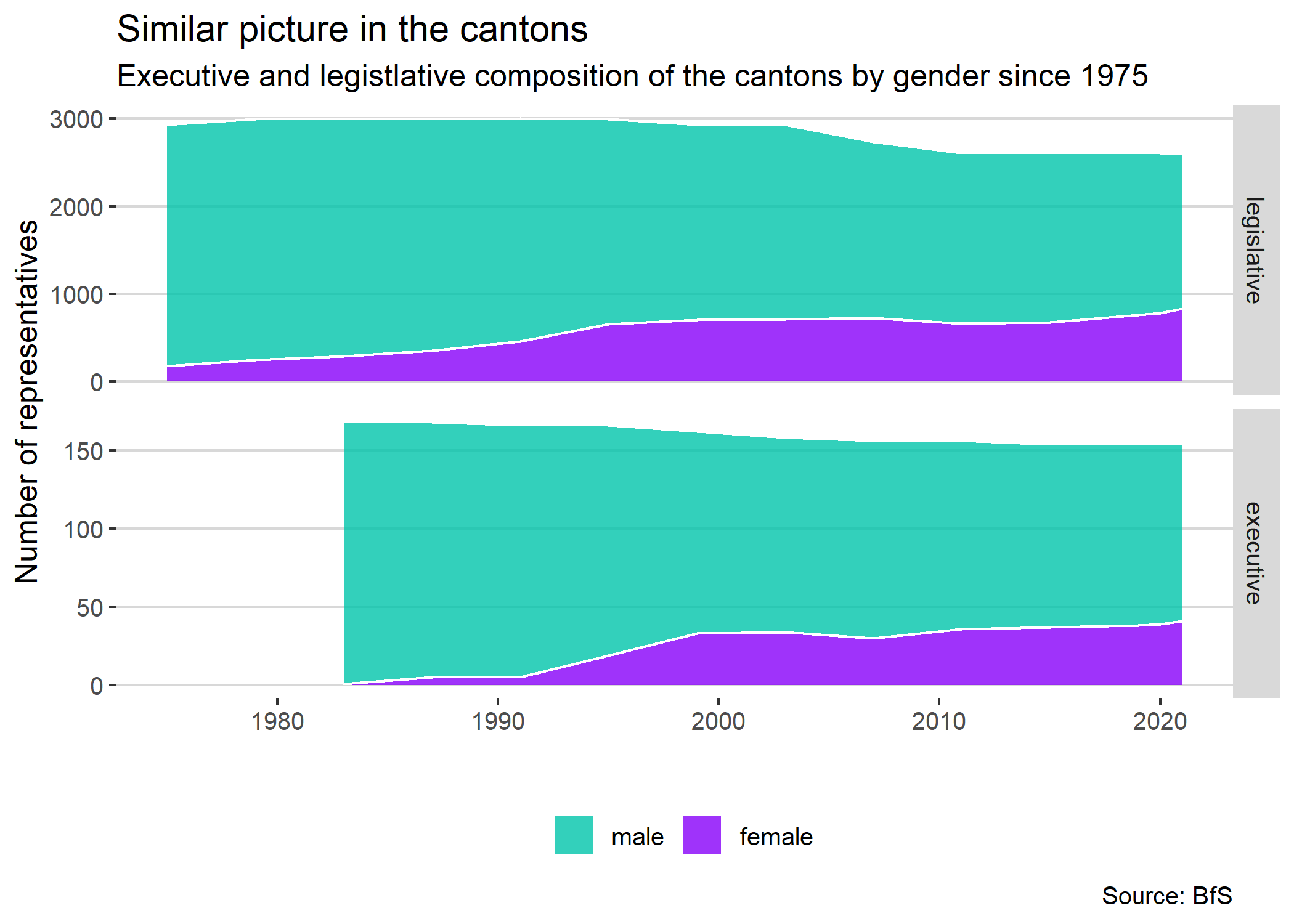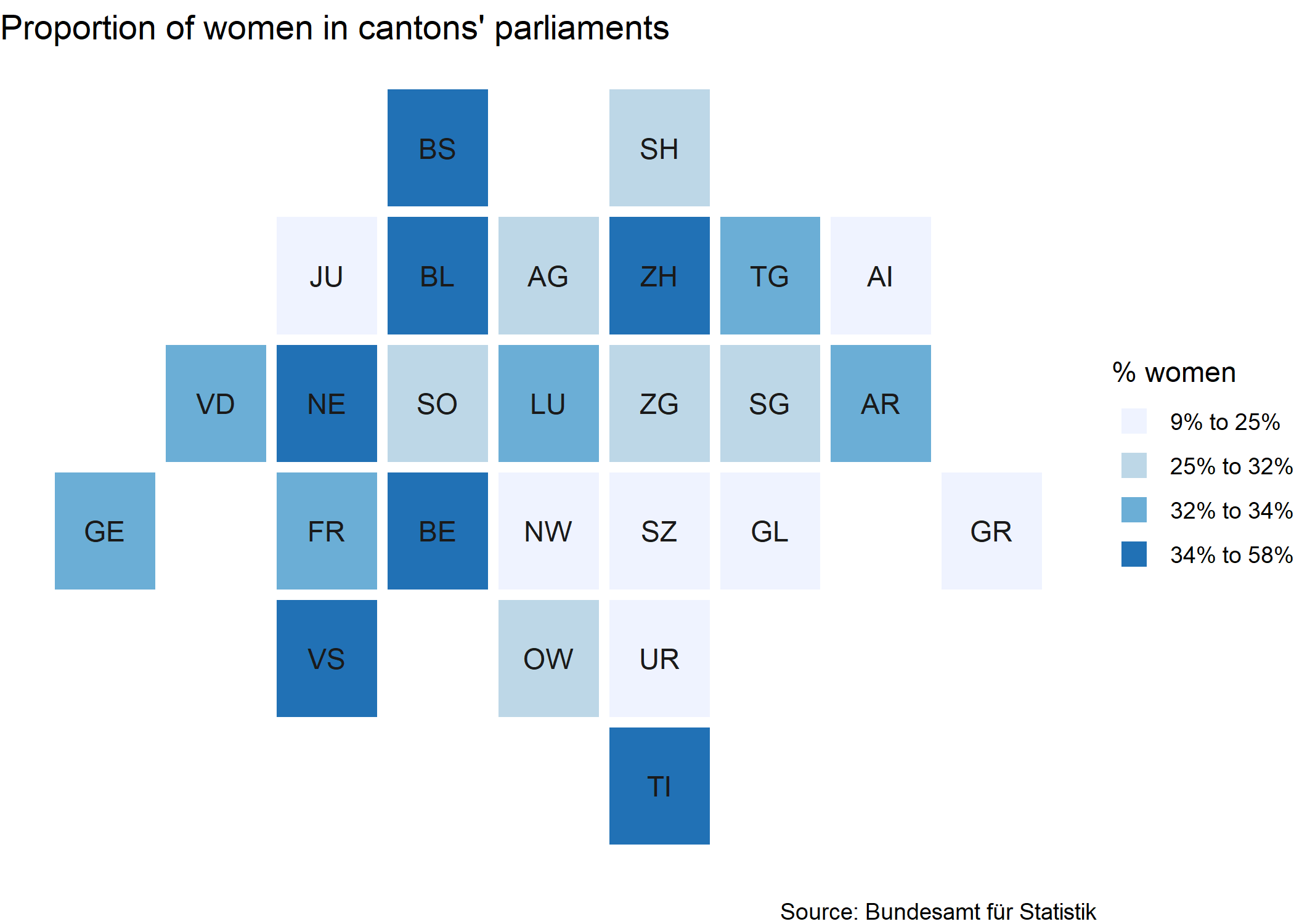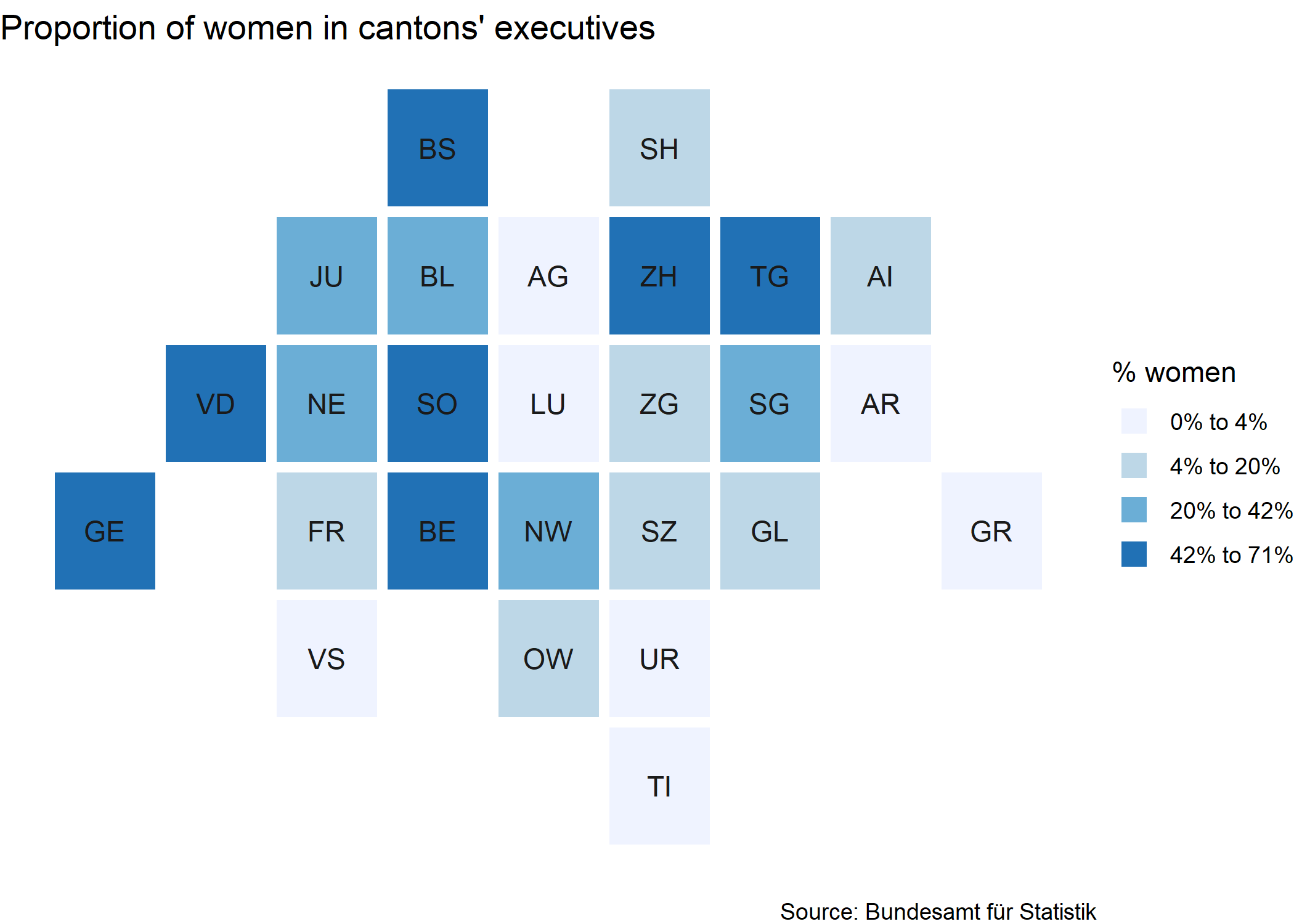Yet another task in my course on Data visualisation and communication course from the EPFL extension school, which I already mentioned in my previous post, was to plot some data with a relation to geography. Could be a map with some extra features, could be choropleth map, could be a cartogram (Wikipedia has a nice overview over different types of thematic maps). I decided to continue the theme of women in politics by looking at the number of female representatives.
This website provided a good starting point, with some resources and data on the representation of women in Swiss politics. To provide some context for the current situation, I started by plotting the number of women in the federal and national councils and the council of states:

By the way, colors for indicating gender take some consideration to avoid tapping into the stereotypical pink and blue, and this blogpost illustrates different approaches. I liked the Telegraph‘s approach of using colors inspired by the suffragette movement, so I adopted this here as well.
Back to the content: We’ve had a few female federal councillors, but in parliament, the numbers have only been increasing slowly, or not at all, as in the council of states (Ständerat in German). It’s a similar picture if we look at the executive and legislative parts of all the cantons:

Concentrating on the current situation, I can finally look at the data with some geographical twist, as was the original task. Here are the proportions of female members of each canton’s parliament:

I binned the values into quartiles, meaning that a quarter of the cantons have 25% or fewer women in their parliaments. In fact, only one canton – Neuchâtel – has over 50%. The other extreme is Schwyz with the abysmally low 9%.
Looking at the executives in each canton, the proportion of course is based on a much smaller total number (5 to 7). Still, the proportions are actually not that much different:

8 cantons have no women at all in their executive (and no, there is no canton with women only).
While I celebrate all that was already achieved and highlighted at the recent Women’s Day, there is still a long way to go.